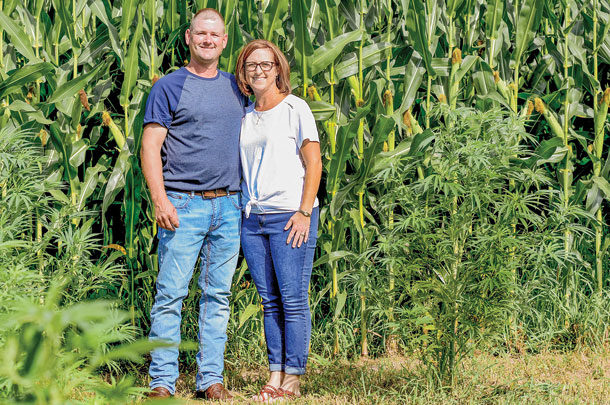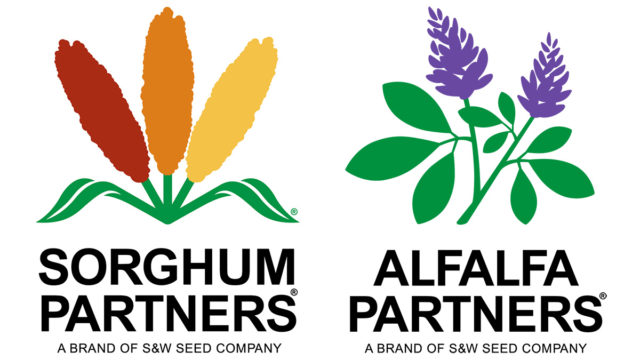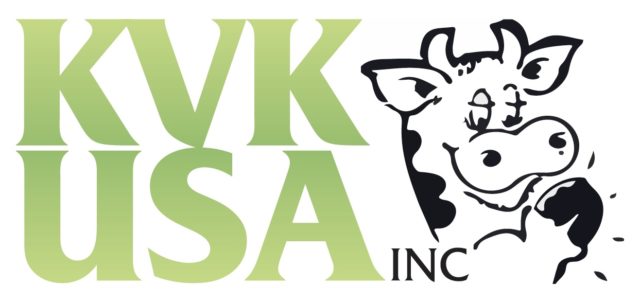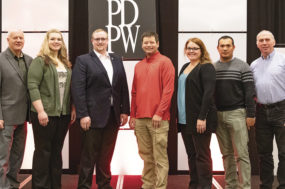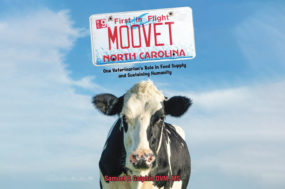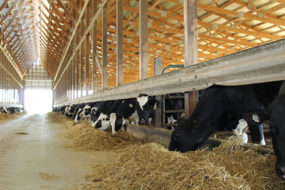Over the past few years, state-authorized pilot programs for growing industrial hemp as an agricultural crop have opened up across the country.
In early 2019, the value of the dried hemp flower hit an all-time high, as the emerging market for processing the biomass for cannabidiol (CBD) oil outpaced the available supply.
Wiese Bros. Farms, Dan Wiese
Among those intrigued by this specialty crop were dairy operations looking for a leg to add to their stool of diversification. One of them was Wiese Bros. Farms, located just outside of Green Bay, Wisconsin. Dan Wiese, the farm’s agronomy operations and project manager, began researching the projected opportunity to maximize profit on a small acreage, thus diversifying his family business that includes 6,000 dairy cows, a trucking company and alfalfa mill.
Wiese first planted hemp in 2018 as part of Wisconsin’s industrial hemp pilot research program, with the intention to sell it as a grain crop. That market never came to fruition. However, in early 2019 when the dried hemp flower was estimated to be worth $45 to $50 per pound, he switched to growing hemp for cannabidiol (CBD) production.
Wiese partnered with a handful of other local farmers and growers to take their crop one step further through the supply chain. The partners invested in extraction equipment to turn the dried flower into crude oil, forming Ledge Rock Hemp, a processing facility to produce raw crude for the CBD market.
“Our plan was to be a wholesaler,” Wiese recalls. “We’re dairy farmers; that’s what we do.”
Entering the direct sales and retail markets was foreign territory to this group. However, the value of extracted crude on the open market plummeted by the fall 2019 harvest season. The dried hemp flower that was valued at $50 per pound in January of that year had sunk to closer to $10 per pound. That’s when marketing the oil made from the partners’ own crop went from being a “back-up plan” to now their bread and butter. Ledge Rock Hemp shifted their focus to market their own products under the brand Tinc’s.
All together, the Ledge Rock Hemp partners grew around 50 acres of industrial hemp in 2019. At a density of 2,000 plants per acre, he estimates they harvested 1 pound of dried flower per plant (at 8% dry matter). The resulting crude oil from 20 plants is enough to produce 350 bottles of their branded oil tinctures. With a crop of roughly 10,000 plants, Ledge Rock Hemp has more than satisfied their own demand for locally grown raw material.
“We didn’t realize just how much these plants would produce,” Wiese says, reflecting on his bountiful 2019 crop.
With an abundance of biomass still in storage from last year, Wiese grew only a small, backyard plot of hemp in 2020. His stand is less populated, at just 800 plants per acre, and he’s traded mechanization for hand labor to reduce input costs.
Pirtle Farms, Cliff Pirtle
Meanwhile, 1,400 miles away in Roswell, New Mexico, Pirtle Farms is in their second year of growing hemp for the CBD market. The state opened up a hemp-growers’ pilot program in 2019, and Cliff Pirtle was among a group of dairy producers who got in on the chance to diversify their multifaceted family business of dairying and forage harvesting.
Like Wiese, Pirtle faced some learning curves that first year.
“When we got in, we had no idea how to grow it. Then we had no idea how to harvest. And then we had no idea how to sell it,” Pirtle says.
He dedicated 60 acres under lateral-move sprinklers to this new crop. After purchasing the hemp plants as seedlings for $3 apiece, he planted at a density of 2,500 plants per acre. Their crop yielded between 1,000 and 4,000 pounds of dried flower per acre. The harvest is currently stored in jumbo totes and will soon be taken to a nearby processor to be extracted into crude oil to then be sold for CBD processing.
“We knew going in, when we would sell our product would be when people ran out of 2019 crop. We knew we’d be planting the 2020 crop before we sold the 2019 crop,” Pirtle says. “Not many manufacturers want the dried flower. Buyers are looking for either winterized crude or isolate.”
As planned, Pirtle grew hemp again this year, but with a focus on further reducing inputs. He seeded directly into the ground, at a cost of 13 cents per seed and a rate of 8,500 seeds per acre. That brought the cost down from $7,500 per acre to $1,100 per acre across 80 acres.
What happened to the hemp market?
Wiese and Pirtle weren’t the only dairy producers intrigued by the high-profit hopes of hemp. In fact, so many farmers and others jumped into growing this specialty crop that by harvest time in the fall of 2019, the supply of hemp biomass far exceeded processing capacity. Wiese attributes the drop in value to “massive amounts of biomass” produced across the country.
Following the 2018 Farm Bill that legalized industrial hemp as an agricultural crop, licensed acres in the U.S. jumped 550% from 2018 to 2019, according to Beau Whitney, chief economist for the National Industrial Hemp Council. Whitney notes that while the supply pipeline was overflowing with hemp, the processing side still struggled to get on its feet. Considered a high risk by lenders and investors, obtaining financing for hemp-based businesses was difficult, as was wading through the murky regulatory waters of a crop that only a year before had been classified as a controlled substance.
“We all did what farmers do. When the price is good, we hammer it,” Wiese says. However, the conservative projections in early 2019 that calculated $20,000 to $40,000 profit per acre were reduced down to just a sliver of that by harvest, for those lucky enough to find a buyer at all. Some farmers are holding out for the market to bounce back before the 2020 harvest season.
Thinking about growing hemp?
Wiese suggests, “Start small.” He estimates the up-front cost to grow a couple hundred plants on a small acreage is about $1,500. Pirtle suggests talking with others in your region that have some experience growing and harvesting this crop to gain a better understanding of the labor expectations and water requirements.
Both men issued a nearly verbatim warning: “Don’t invest more than you are willing to lose.”
 Photos provided by Cliff Pirtle and Ledge Rock Hemp.
Photos provided by Cliff Pirtle and Ledge Rock Hemp.Click here to view the image at full size in a new window.
With an excessive supply of hemp biomass still streaming into the market as we head into the 2020 harvest season, the opportunity to turn quick cash on this crop does not look promising.
“The demand is still there, it just can’t get through the processing from raw material to finished form,” Whitney says. In his extensive study of markets and trends around hemp grown for all uses, Whitney sees positive indications that processors are starting to increase capacity for both CBD and hemp fiber.
Whitney believes those who stick it out will be positioned for a more secure future. “This is all just part of a growing pain that is common in any new market,” he says, noting the infancy of the processing side. “Farmers should be more successful after the first two years.”
From where the markets stand today, selling commodity hemp may not be a profitable venture, though a little more margin may be attainable through forward contracting. Whitney further suggests groups of farmers in close proximity look to pool their crop in a marketing cooperative fashion to appeal to processor efficiencies.
However, Wiese believes there is a place for small-acreage industrial hemp as a direct-to-consumer marketed product, such as what he and his partners are doing with their oil tinctures, smokable dried hemp flower and other hemp products.
The future of industrial hemp
The 2019 growing experience may have taken the wind out of the sails of some dairy farmers who dabbled in hemp, but both Wiese and Pirtle maintain a glimmer of optimism and enthusiasm for this to be a cash crop.
“It’s kind of like being a pioneer,” Pirtle says. “That’s really my motivation for it and my push to do it, the excitement around trying to find the next big thing here in Chaves County.”
There is one thing that could derail his pioneering plans. Pirtle is concerned over how grower regulations could change as his state’s hemp pilot program transitions from local to federal supervision. “Under federal rules, there’s concern it will be nearly impossible to grow hemp for CBD oil,” he says.
On the retail side, Wiese says, “We’ve flat-lined here for a little while.” He attributes the plateau to the pandemic, which put an abrupt halt to the company’s momentum as in-store sales declined. Medical trials they had planned to participate in through the university were canceled, along with their promotional plans for farmers’ markets and vendor events. They’ve pivoted their marketing efforts to focus on driving online sales.
Wiese believes that social acceptance and use of CBD will only continue to grow, as more research emerges to back its benefits. Pirtle agrees, adding, “We’re very much believers in the healing properties of CBD … and that it can help people and animals live a pain-free life.”
As for 2021 cropping plans, Pirtle is leaning toward growing hemp again. He concludes, “We’re not ready to bow out yet. We just need to find ways to make sure inputs are low enough that if we make a mistake, we won’t lose the investment.”
